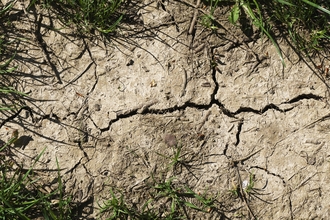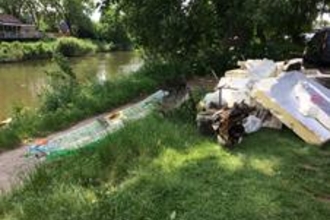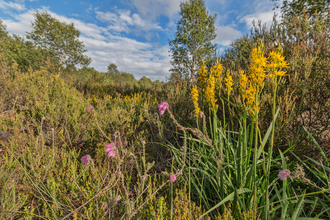Flooding
Extreme flood events are becoming more common in Shropshire, but there are natural solutions to limiting the impacts they can have on communities and businesses.
Flooding can be a devastating event for people, wildlife, homes and businesses -the economic costs can be huge and distressing, with impacts lasting for years. Flooding events occur at all scales, from a flashy tiny tributary stream catchment affecting a handful of houses and disrupting a local network of lanes to the colossal and relentless flows of the Severn in spate.
River flooding and surface water flooding are natural events
It happens when large volumes of water exceed the drainage networks.
For a river system, the rainfall across the catchment flows towards the channels and then out of the channel across the floodplain. Moving floodwater can physically harm the land, undermine and damage buildings, carry pollutants and threaten life.
Surface water floods or those arising from ground water sources can disrupt, pollute and harm too. Long term inundations such as those on the Severn and Vrynwy confluence can persist for weeks, endangering local communities, killing crops and impacting wildlife.
Flooding can not be stopped but the impacts can be mitigated
Traditional engineering responses such as embanking, dredging and attenuation pools, have a very limited but key role in addressing the reduction of flood impact. Property level protection can help, fitting flood proof doors or raising level of air bricks.
Flood barriers, Shrewsbury
The deployment of temporary barriers has proved their worth repeatedly, bravely set up by the hardworking EA and their Local Government partners.
But rain falls over part or in many cases the whole of a catchment, it is not enough to focus purely on the drainage channel when the whole landscape can be brought to bear on the challenge.
Natural Flood Management
Natural flood management is a relatively new part of this multi-agency toolkit of flood management measures. It seeks to work with farmers, landowners, local Flood Action groups and local Parishes to improve the way a catchment functions.
Slow the Flow?
Natural flood management aims to reduce the downstream maximum water height of a flood (the flood peak) or to delay the arrival of the flood peak downstream, increasing the time available to prepare for floods. The myriad Slow the Flow items work together, helping to reduce flow rate in the valley, under storm events. This is achieved by restricting the progress of water through a catchment in 3 ways:
Increasing soil infiltration by increasing the amount of land that is actively aerated which allows water to soak away.
Storing water by using natural features such as ponds, ditches or low lying land or by creating new ponds and areas to store water.
Slowing water by increasing resistance to flow. For example, by planting trees on the floodplain or constructing “leaky dams” in channels.
Slow the Flow project woody debris dam in a Corve Dale brook
Installing woody debris upstream reduces flood rates thereby lowering the peak wave of water ensuring traditional flood protections are less likely to be overwhelmed.
Leaky dams form naturally when large sections of trees fall into and across the channel. These large pieces of wood start to gather smaller sticks and leaves which allows some water through, but holds back some of the water in the stream during high flows. We can mimic nature by building leaky dams using locally sourced wood. The leaky dams can be pinned in place or dug into the bank to ensure they don't move around in high flows. Building a series of dams along a section of stream increases the effectiveness of the dams.
Woody debris helps to create pools and riffles, providing a variety of habitats for fish and aquatic insects and attracts mammals and birds. Importantly leaky dams can slow the movement of silt and sediment downstream. Silt can increase flood risk by reducing the amount of space for water in a channel.
Strengthening hedge and woodland network that lay across slopes can interrupt surface water flows.
Fencing watercourses, planting trees along the riparian corridor and increasing sinuosity all enhance channel roughness which slows flows and improves alert times.
Further information
Visit the Environment Agency website
For further external information download the natural flood management handbook here.



